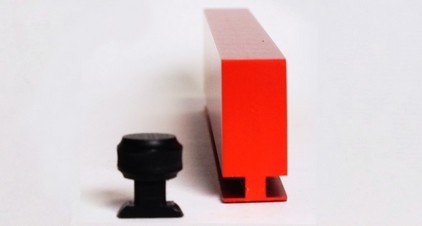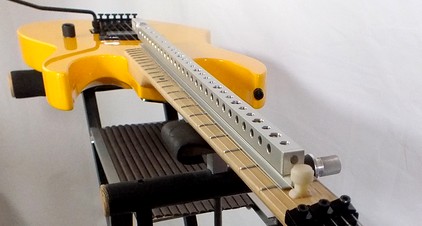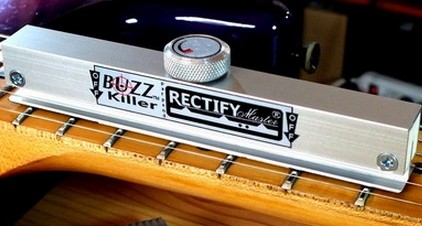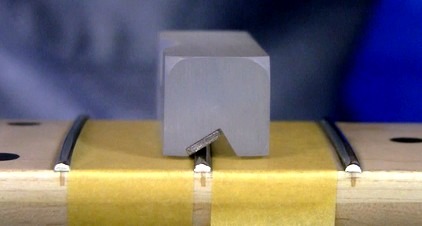How to use R.M.BUZZ Killer
More about this invention: Reference fret level
STARTING
*Very important
1) Don't tighten the two screws that hold the scraping base, only keep them "completely in".
2) Don't turn the adjusting knob more than a quarter of round from the point that it becomes active. Exceeding may damage the tool. Also, no useful or normal neck relief should ever exceed that curve.
Where to scrap and how.
If the buzz happens while fretting the string at the 12th fret, the problem might be the 13th fret or upper in the fretboard. Start using the tool set straight on the area. it will help to identify the offending fret(s) right away.
The tool can be used straight on a straightened fretboard or adjusted to match or imprint a particular relief on a curved fretboard. Your choice/strategy.
Check the progress by playing the notes that were buzzing and, if needed, sand again. Move along an X pattern to make the job faster and more homogeneous and, if necessary, move along the fretboard and/or aside. The goal is to sand down the higher fret(s) in order to work like the others. To obtain the best result, adjust the relief of the tool like the overall relief of the area where the leveling operation is being carried out. That way, the Buzz Killer tool will "imprint" the correct curve on the frets (fretboard, fingerboard... depending on what is being leveled).
One of the many ways to match the relief of the tool with the relief of the fretboard can be as follows: bend the bottom of the tool a bit more than the fretboard and let it rock on the frets. Release the knob slowly until the Buzz Killer doesn't rock anymore.
When the tool guards reach the lower frets and all the frets reached the desired mutual level (or became straight, if we wanted them so) the tool doesn't sand anymore.
Keep testing the progress from time to time by playing the instrument and especially the notes that were buzzing. That will help to determine when the job is done.
How to change Buzz Killer fret guards
 |
Step1) Remove dirt from the base | |
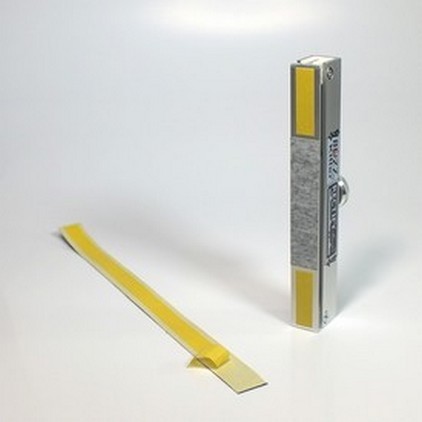 |
Step2) Apply the abrasive and the tape | |
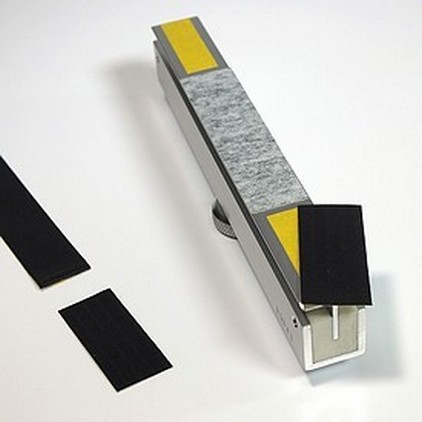 |
Step3) Apply the guards | |
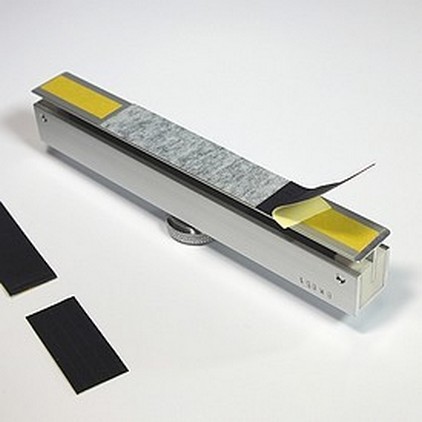 |
Start carefully from one corner | |
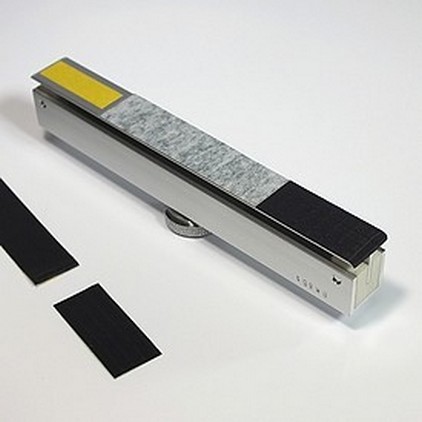 |
Avoid air bubbles between the base and the guards | |
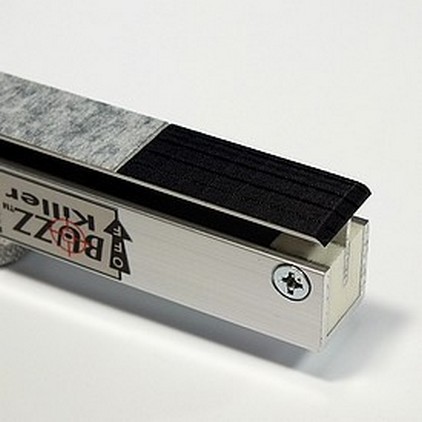 |
This is how a correct application should look | |
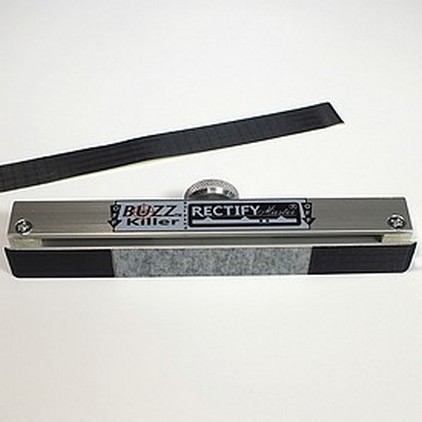 |
This is how the bottom of the tool should be at the end |
|
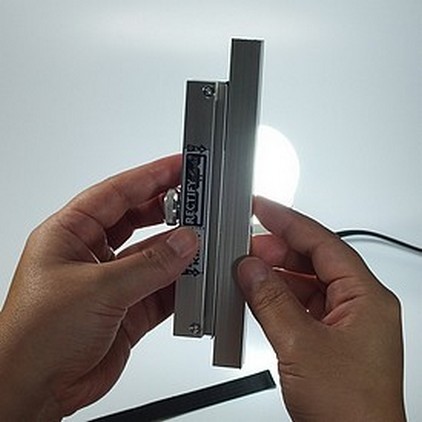 |
Step4) When done, before use, check the abrasive and the non-abrasive planes mutual level with something straight and a light source as in the picture |
It is al right to use different abrasives. If the thickness of the new abrasive doesn't match with the one of the guards, please add tape layers between the base of the tool and the lower plane/planes to bring them to same level.
If guards lose some fibers it is not a problem. Just cut them off. There might be the need to replace the guards when they become too uneven or broken. Guards are just a protection. There is no need to force the tool to the point that the protections get "stressed".
At the end of the fret leveling job, please release the knob so that the tool returns straight.
For any questions, please Contact
More about this invention: Reference fret level
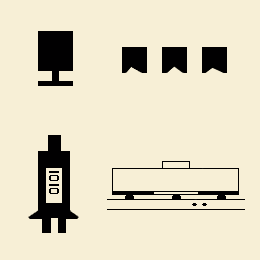


 *Basically, Buzz Killer tool doesn't need the string raiser accessory. If working close to the nut becomes less than smooth, the string raiser will solve the issue.
*Basically, Buzz Killer tool doesn't need the string raiser accessory. If working close to the nut becomes less than smooth, the string raiser will solve the issue.